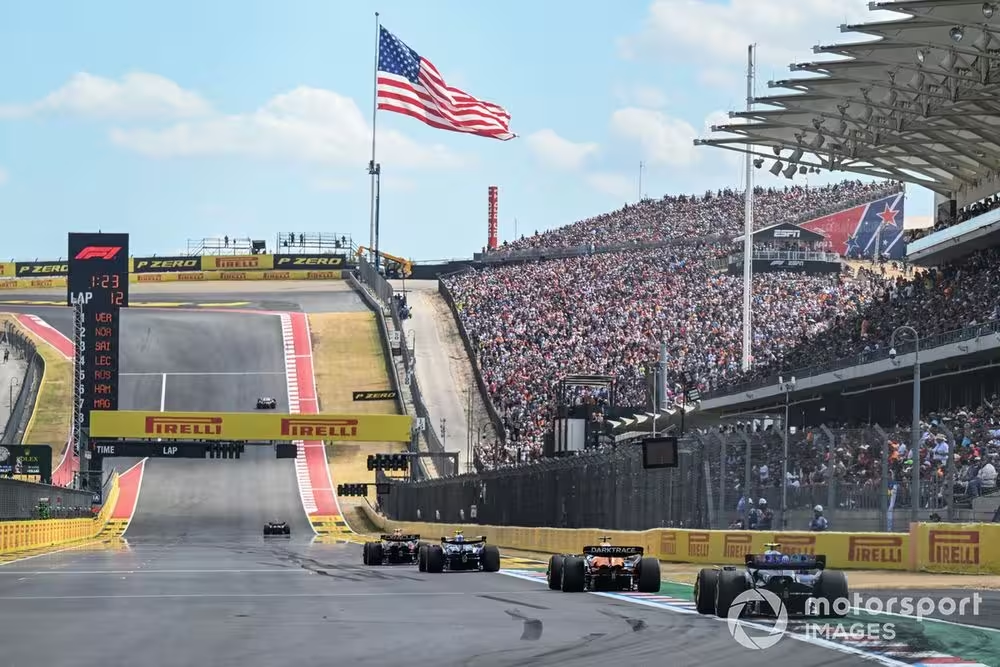The FIA has revealed several Formula 1 teams were forced to make changes to their rear wings for the United States Grand Prix amid efforts to eradicate slot-gap trickery.
There has been a renewed focus on the behaviour of rear wings over recent weeks in the wake of the ‘mini-DRS’ controversy that erupted at the Azerbaijan Grand Prix.
After McLaren’s Oscar Piastri won the Baku race with a flexible rear wing that behaved in such a way that it helped open up the slot gap for a straightline speed boost, rival teams complained to the FIA about what the squad was doing.
That prompted discussions between the governing body and McLaren about the design, which had passed all the static load tests that were demanded of it.
In the end, with the FIA expressing its belief that the behaviour of the wing in opening up the slot gap to such an extent was not acceptable, McLaren agreed to make modifications to that low-drag specification.
It has since emerged, however, that the FIA has taken further action in defining to all teams what it deems acceptable when it comes to the rear wings – as other outfits were also understood to be messing around with opening up the slot gap.
The FIA’s head of single-seater matters Nikolas Tombazis has revealed that as a result of new guidelines that were sent to teams, several of them had to make tweaks for Austin – with McLaren the only one that has so far admitted to it.
Oscar Piastri, McLaren MCL38, Franco Colapinto, Williams FW46
Photo by: Simon Galloway / Motorsport Images
“We issued after Singapore some communication about rear wings, saying what we would consider acceptable or not acceptable,” explained Tombazis. “Two or three teams had to make some small tweaks to adjust to that.”
It is not confirmed which other teams had to make changes as a response to the FIA guidance, but sources suggest that all of 2024’s race-winning outfits have been under the spotlight for potentially pushing the limit of the rules with regard to rear wing flexing.
Tombazis said that the basic gist of the new guidance was that the FIA would deem any expansion of the slot gap by more than 2mm when DRS was closed to be outside of the regulations.
“We don’t want the amount of opening there to exceed 2mm,” he said. “There’s some natural opening, because of the way the wings are mounted and deform and so on, but some teams were deforming more.”
To help the policing of this matter, the FIA has expanded the fitting of…
Click Here to Read the Full Original Article at Autosport.com – Formula 1 – Stories…

